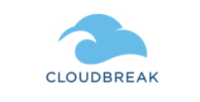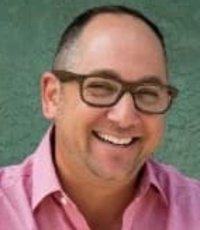Tuesday, January 26, 2021
Interview with Jamey Edwards, Cloudbreak Health

Our interview today is with Jamey Edwards, the CEO of Cloudbreak Health, a Los Angeles-based telemedicine company, which provides telehealth services, including interpretation and access to specialists, within healthcare facilities. We caught up with Jamey to learn more about the company, and also its recent move to merge with another company, Uphealth, via a special purpose acquisition company (SPAC).
What is Cloudbreak Health?

Jamey Edwards: Cloudbreak is a unified telemedicine company, focused on resolving healthcare disparities through the healthcare system. We bring language interpreters to the point of care. We created this in 2003 for the medical interpreting market, but since then, we’ve expanded the platform so that it’s not just about language. We’re now addressing physical shortages in nursing, specialties, and access, with new cases such as telestroke, telepsychiatry, teleurology, and telequarantine. Since the pandemic, our solution has been adopted by 27 health systems overnight and includes hundreds of doctors. We can now turn any hospital room into a connected are room, so that we can beam in doctors without them having to go into rooms. That saves valuable PPE and care resources, lowers the risk of contagion, and we’re able to help reduce patient isolation by connected them to families in a HIPPA compliant fashion. We now have 1800 hospitals across the country, and have had over 100,000 encounters over the platform.
Explain how you went from medical interpreting to all these different applications?
Jamey Edwards: We originally had a singular focus on helping deaf patients. The reason why is they were much more likely to encounter poor outcomes, because of lack of communication with a doctor. Communication is the number one diagnostic tool a doctor has to help a patient, to understand an illness, family history, and to help triangulate what might be ailing them. It’s more important than testing. If a patient comes into a hospital, that’s how you figure out if it’s a heart attack or indigestion. What we provide can speed diagnosis and reduce a patients level of anxiety, and having the patient actively participating empowers them to make better decisions. When we started rolling this out, we found that there were a lot more use cases, more than tele-psychiatry, more than tele-stroke, more than tele-ICU, it was a solution with broad usage. It went from just deaf patients to an entire hospital. Our infrastructure ended up in every hospital department.
Does this involve a lot of hardware?
Jamey Edwards: Our go-to-market platform is an iPad Pro mounted on a specialized cart. The iPad Pro is better, and has a larger screen size, and better audio and acoustics. It’s great for 90 percent of the telemedicine you can do at the point-of-care. Also, it has a number of integrations, and interoperability which is critical to the platform and the healthcare enterprise. Hospitals don’t want you to go in and tell you that they have to rip out their existing equipment, they want you to leverage the equipment investment they have already made. By putting a large number of iPad Pros into the field, that allows us to also integrate with existing hospital EMR partners.
Tell us a little bit about this SPAC you’re in the midst of?
Jamey Edwards: We did a financing in 2015 with Kayne Partners, which put $15M into the business. On that $15M, we grew 3x from where our business was. We were already riding the wave in the digital health area, and post-COVID, that has really caught fire. We were already riding the wave of other digital health trends, like digital transformation, better broadband, reduced cost of equipment and endpoints, and smartphone penetration. That’s boded well for general use. COVID just accelerated our product roadmap, and we found ourselves in a great position to penetrate the market.
Why a SPAC and not a traditional IPO?
Jamey Edwards: When COVID hit and accelerated the profile of digital health, we received many incoming calls on what we were going to do with our business. As a committed management team, we wanted to find partners who could really help us increase our income at scale. We looked at the alternatives. We had been speaking with the Uphealth team for about two years, and we felt the founder of Uphealth had a bold vision for using Uphealth to create a company addressing the four fastest growing segments in local healthcare. What really got me excited, was meeting the other companies, and how they were purely complementary, and there were lots of opportunities for cross-selling, collaboration, and to deliver Uphealth to the point of care.
What’s next for you?
Jamey Edwards: We’re very excited to see continual digital transformation in the industry, which we are part of, and we’re actively expanding our base of hospitals. We’re now looking forward to being part of Uphealth, which will be one of the only, profitable, publicly traded digital health platforms serving the global healthcare market. We’re excited to continue to build out that platform, and help local healthcare providers manage their digital health initiatives.
Thanks!